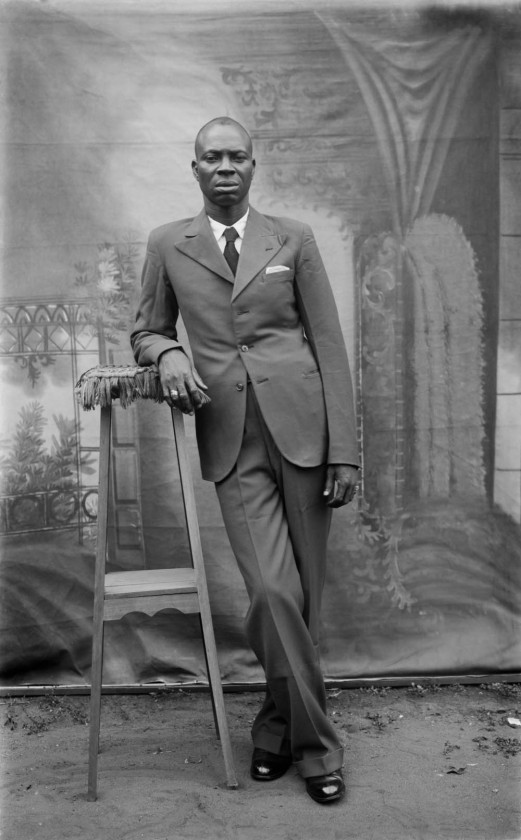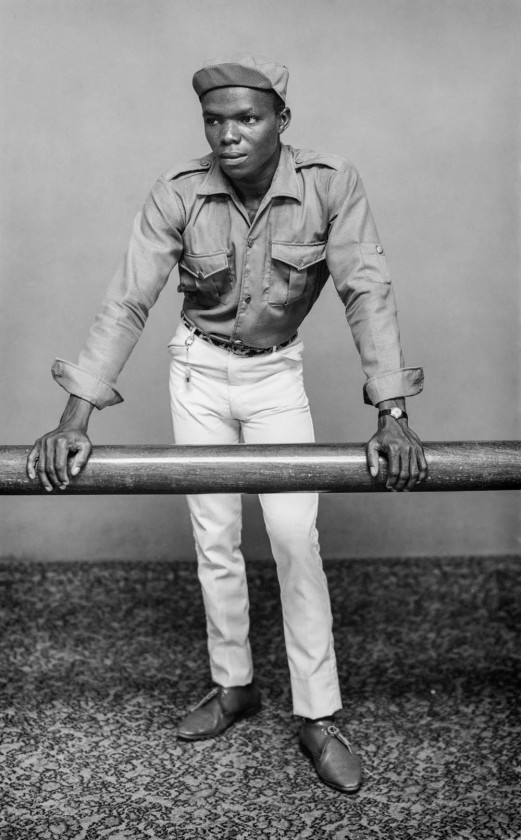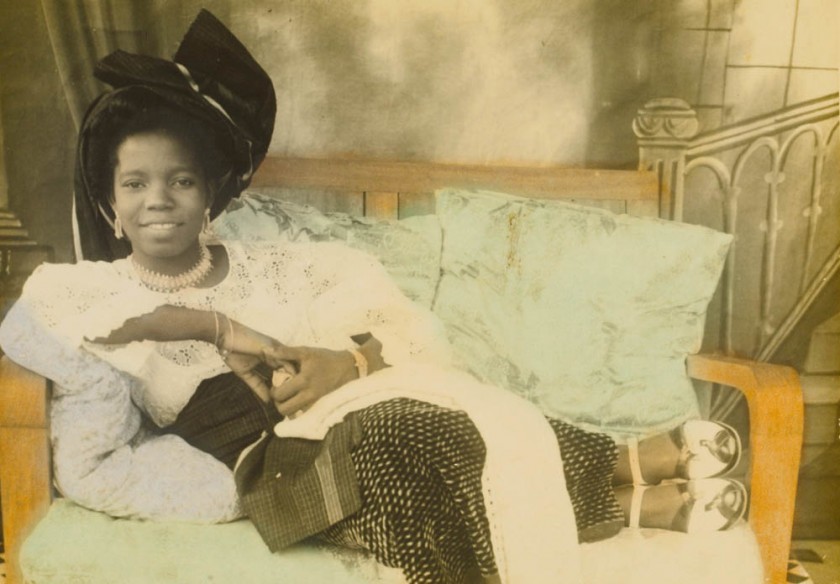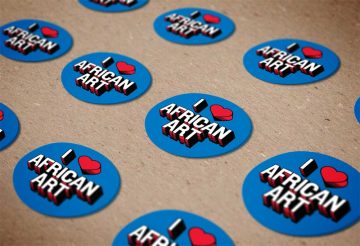Home | History of Benin | Early Photography in Nigeria | S.O. Alonge: The Early Years | Ideal Studio, Benin City | Picturing a New Society | Ideal Studio Portraits | Ideal Studio Setting | Royal Court Photography | Commemorative Objects
Alonge’s studio portraits of Benin residents provide rare insight into the early history and practice of studio photography in Nigeria. In the 1930s and 1940s, many Nigerians patronized photography studios for the first time, presenting themselves and their families to the camera in ways they wished to be photographed. At that time, it cost two to three shillings for a professional portrait, an amount that was unaffordable to many. Those who could afford it dressed up in the latest fashions or in distinctive traditional textiles to get their portrait taken. Some individuals expressed themselves with their own cosmopolitan style of dress and hairstyles, while others dressed alike for special occasions such as funerals or to express their solidarity with extended family, social, and political groups. In some cases, women wore the same headties and carried similar handbags. Alonge might have suggested certain poses or furniture, or his patrons would compose their own unique poses and portraits with family and friends. Ultimately, he was engaged in a collaborative process with his subjects to achieve the best results.
Studio Backdrop, Props, and Handrail
Throughout the years, Alonge used various backdrops, flooring, furniture, and props for his portraits. His first backdrop was a locally produced Victorian-style garden scene, first with dirt flooring outdoors and later with checkerboard floors, quilted tiles, woven mats, factory-printed cloth, and oriental rugs indoors with lighting. He used various chairs and mats for seating. Some of his favorite props included flowers, plants, clocks, artwork, and advertisements. Later, Alonge began to use more naturalistic settings outdoors and a plain studio backdrop for indoor lighting.
Alonge varied his portraits with the use of studio furniture—stools, couches, chairs, and a wooden handrail. The handrail was one of the more popular and unique props. It was a self-standing wooden rail that patrons could lean or sit on in some fashion. Women can be seen sitting sideways on the railing or standing and leaning onto the rail. Men may be seen sitting on the rail, but more often, are shown standing in front or behind the railing leaning in with both arms. In some cases, friends are seen sitting on either side facing one another.

Benin City, Nigeria
Photograph by Solomon Osagie Alonge, c. 1950
Chief S.O. Alonge Collection
EEPA 2009-007-0093

Benin City, Nigeria
Photograph by Solomon Osagie Alonge, c. 1950
Chief S.O. Alonge Collection
EEPA 2009-007-0101

Benin City, Nigeria
Photograph by Solomon Osagie Alonge, c. 1940
Glass plate negative
Chief S.O. Alonge Collection
EEPA 2009-007-0114
]
Stella Osarhiere Gbinigie
Madam Stella Osarhiere Gbinigie was 16 years old in 1950 when S.O. Alonge photographed her at Ideal Studio. Over 60 years later, Gbinigie recalled that she and her three sisters dressed up in their mother’s contemporary clothing—lace blouses, skirt wrappers, and headties—and her distinctive jewelry to get their portraits taken.
She remembered how respectful and friendly Alonge was, how he made his clients feel at ease, offering choices for seating or standing and suggesting poses and hand positions. Alonge’s skills with hand-coloring photographs are evident in the beautifully toned image of a reclining young Stella on a couch.

Benin City, Nigeria
Hand-colored photograph by Chief S.O. Alonge, c. 1950
Chief S.O. Alonge Collection
EEPA-2009-007-1787
